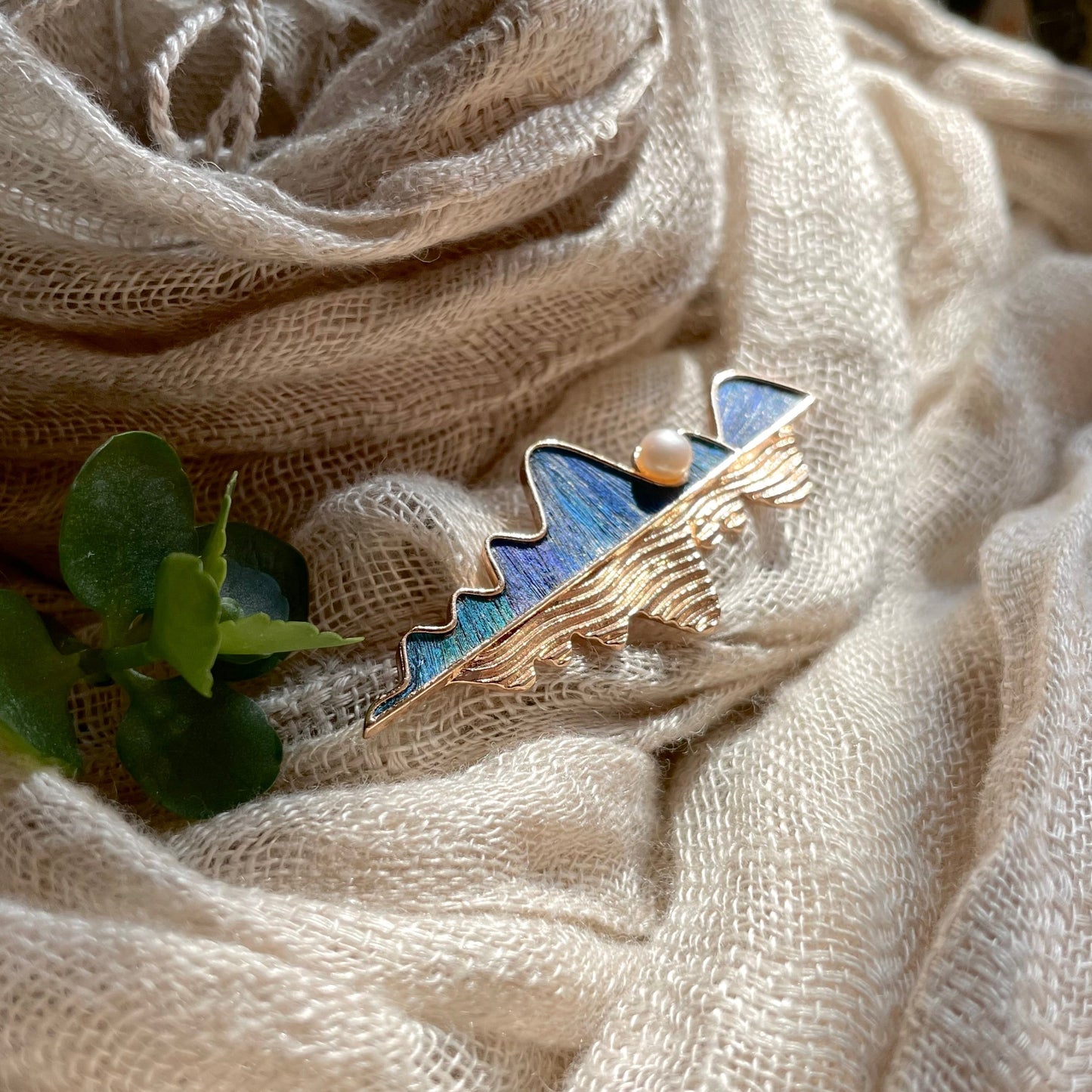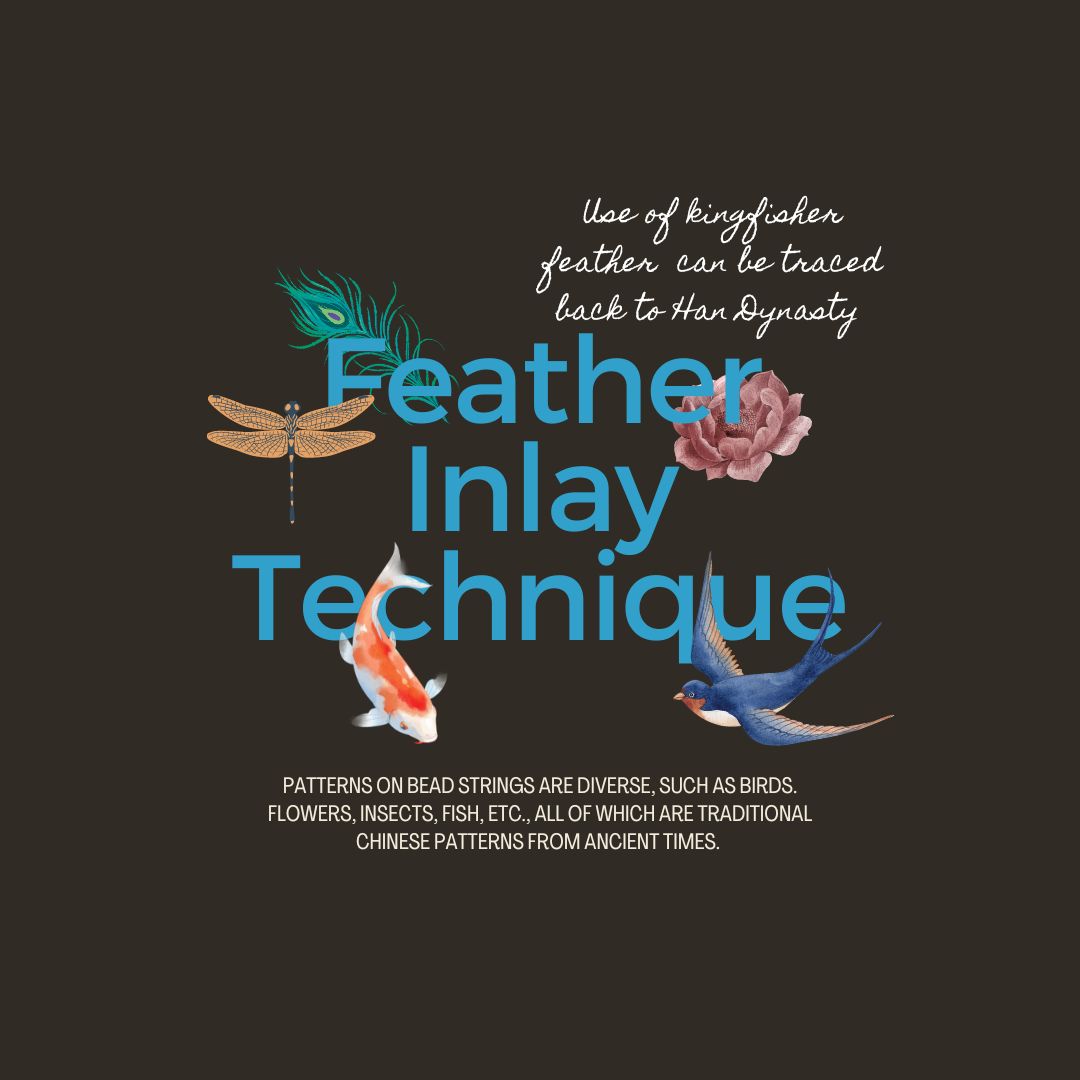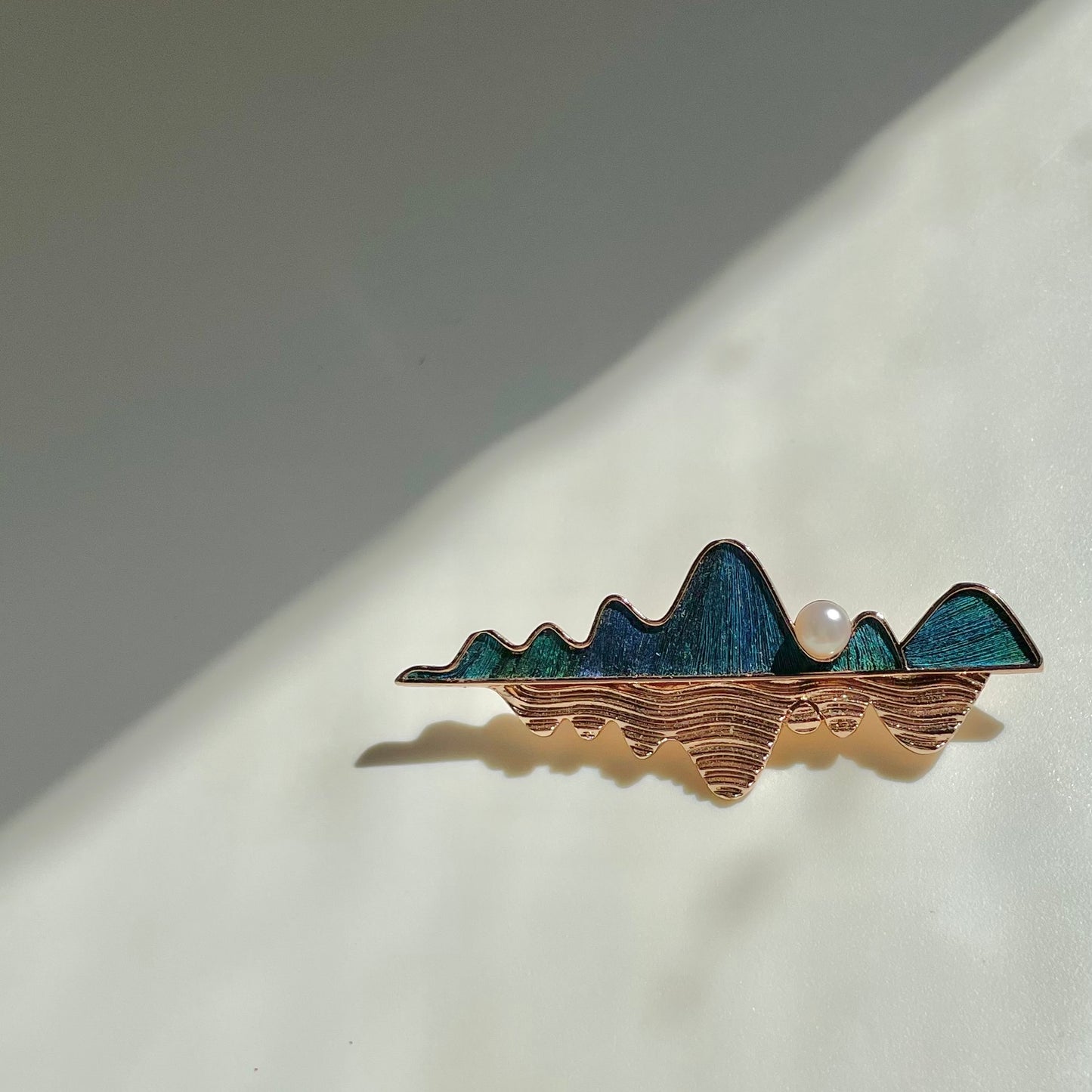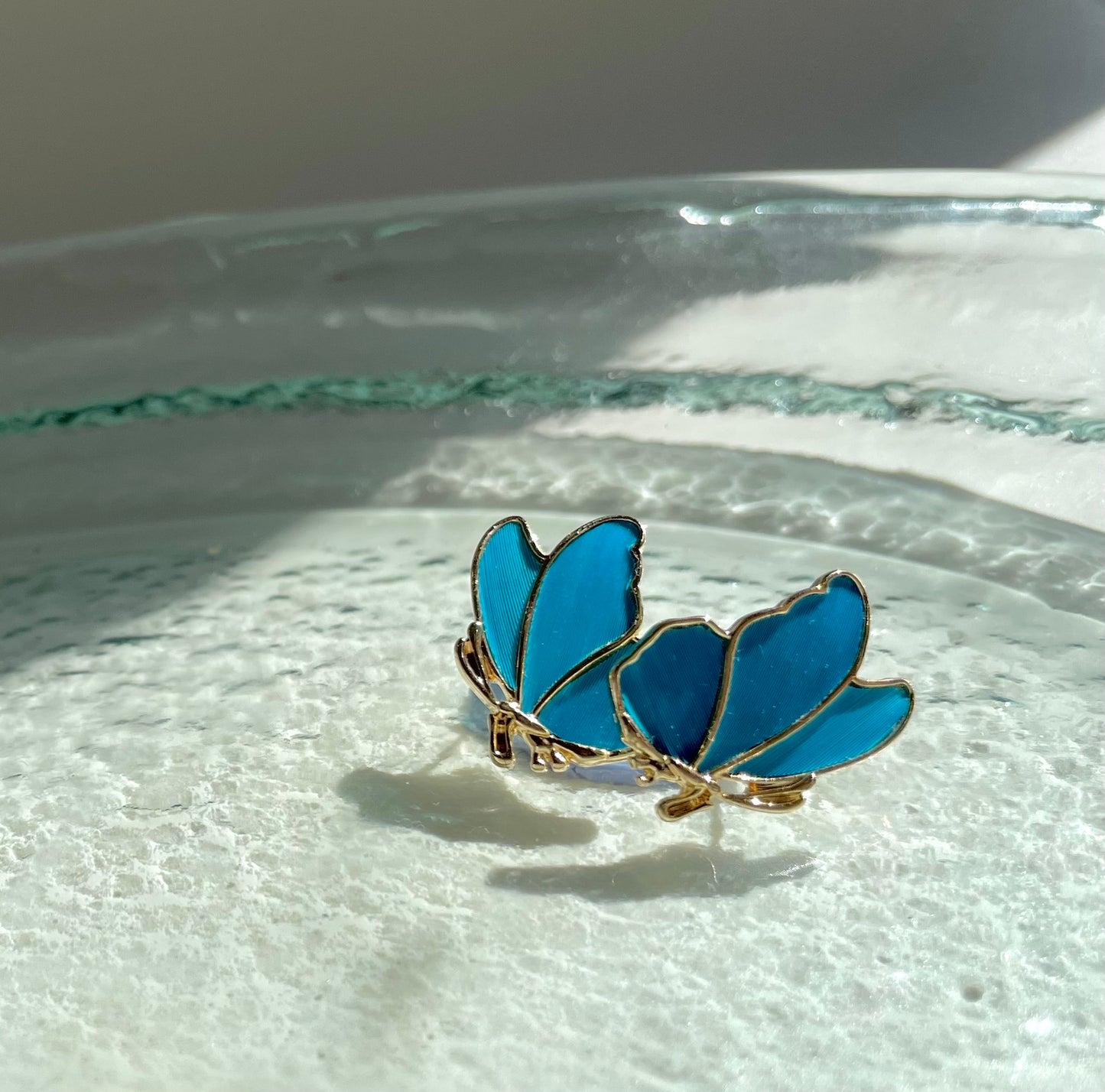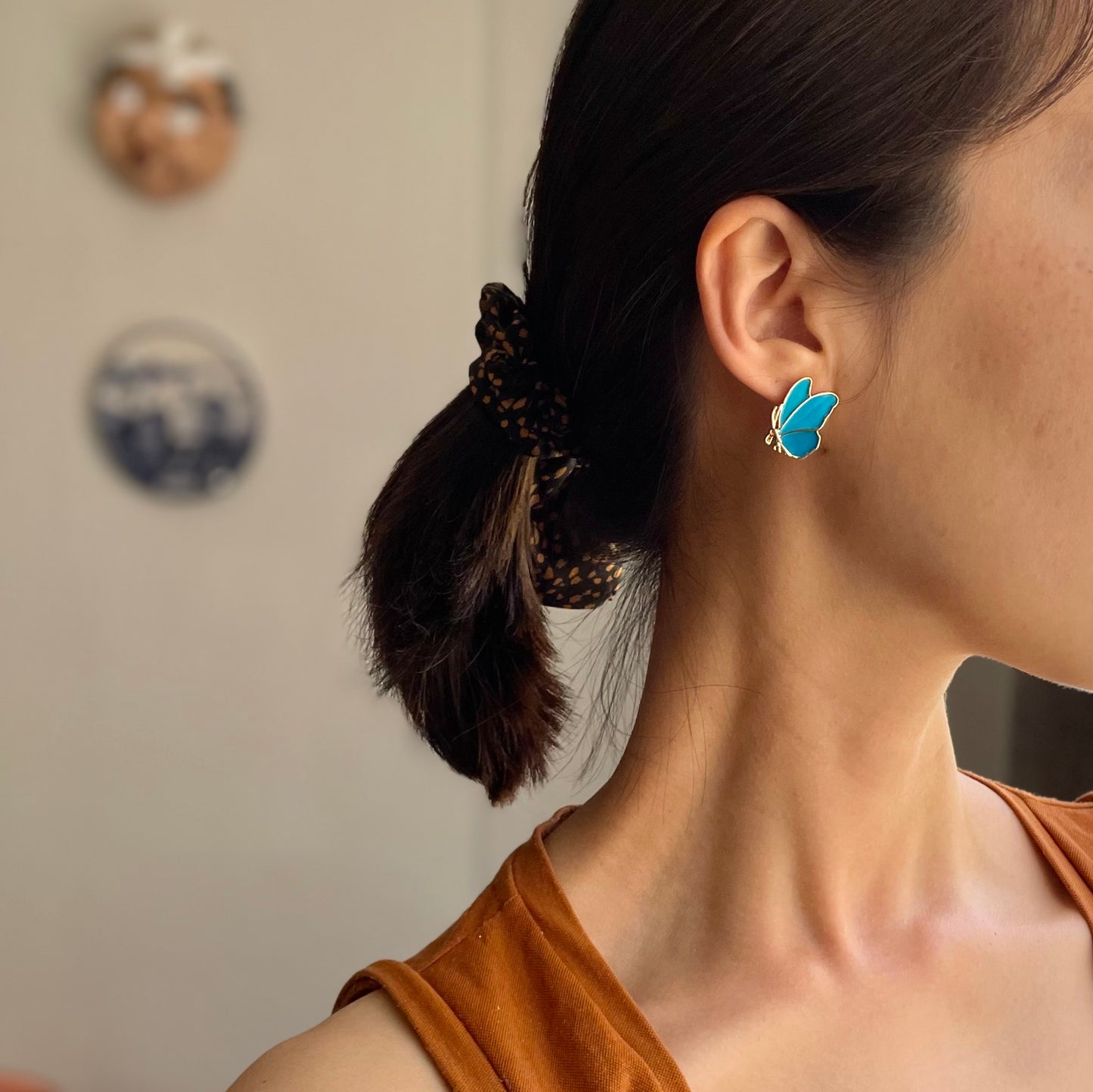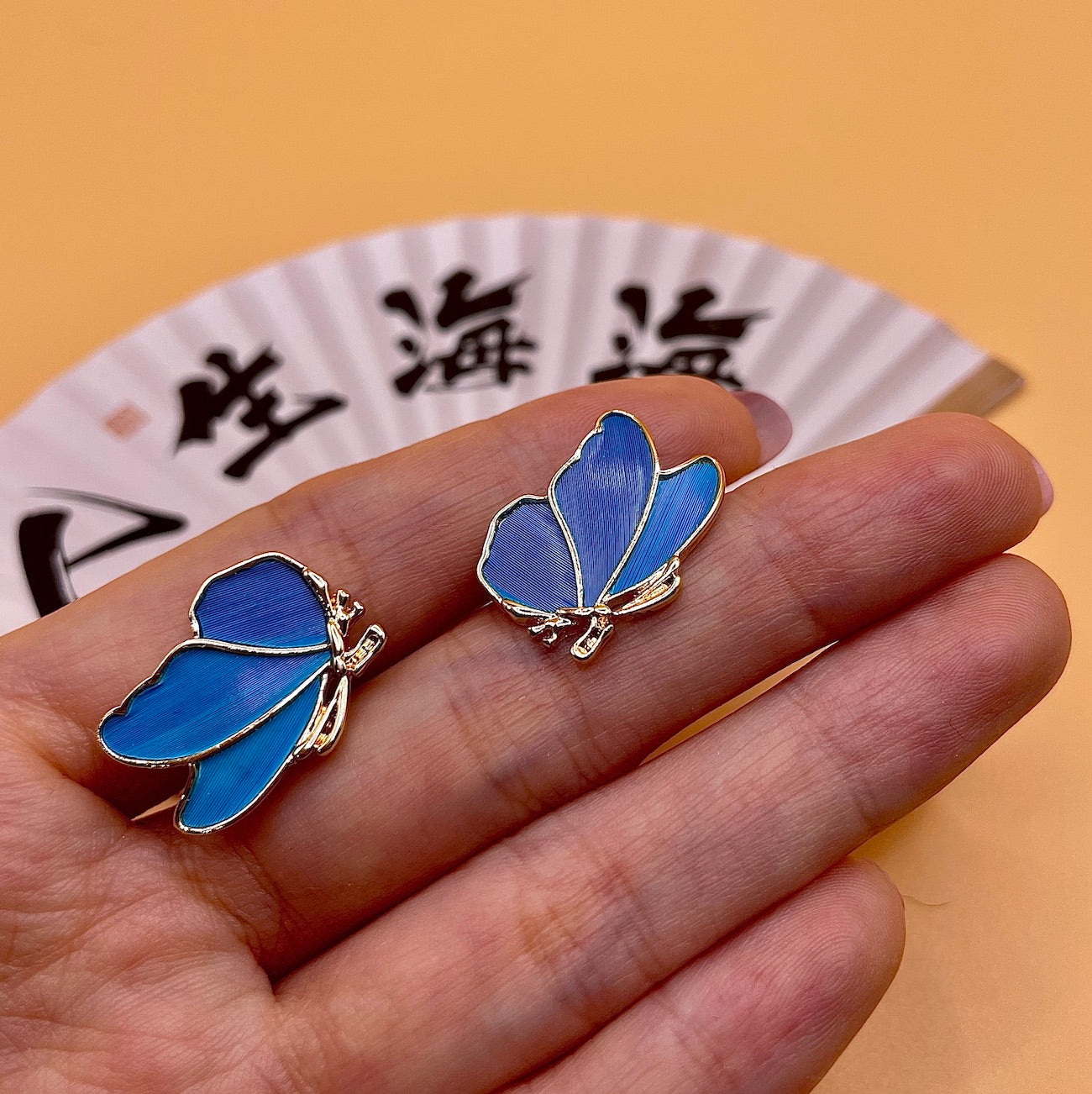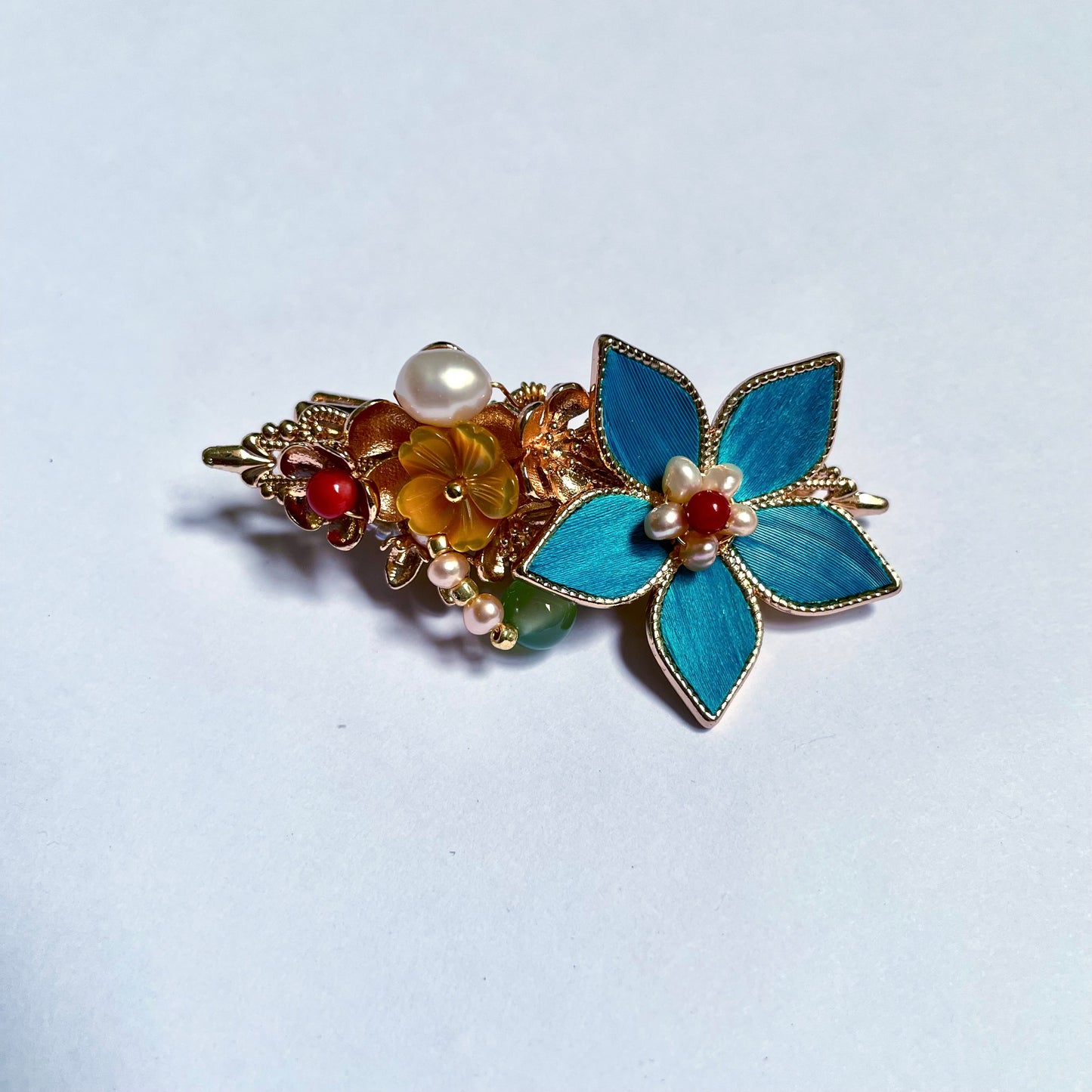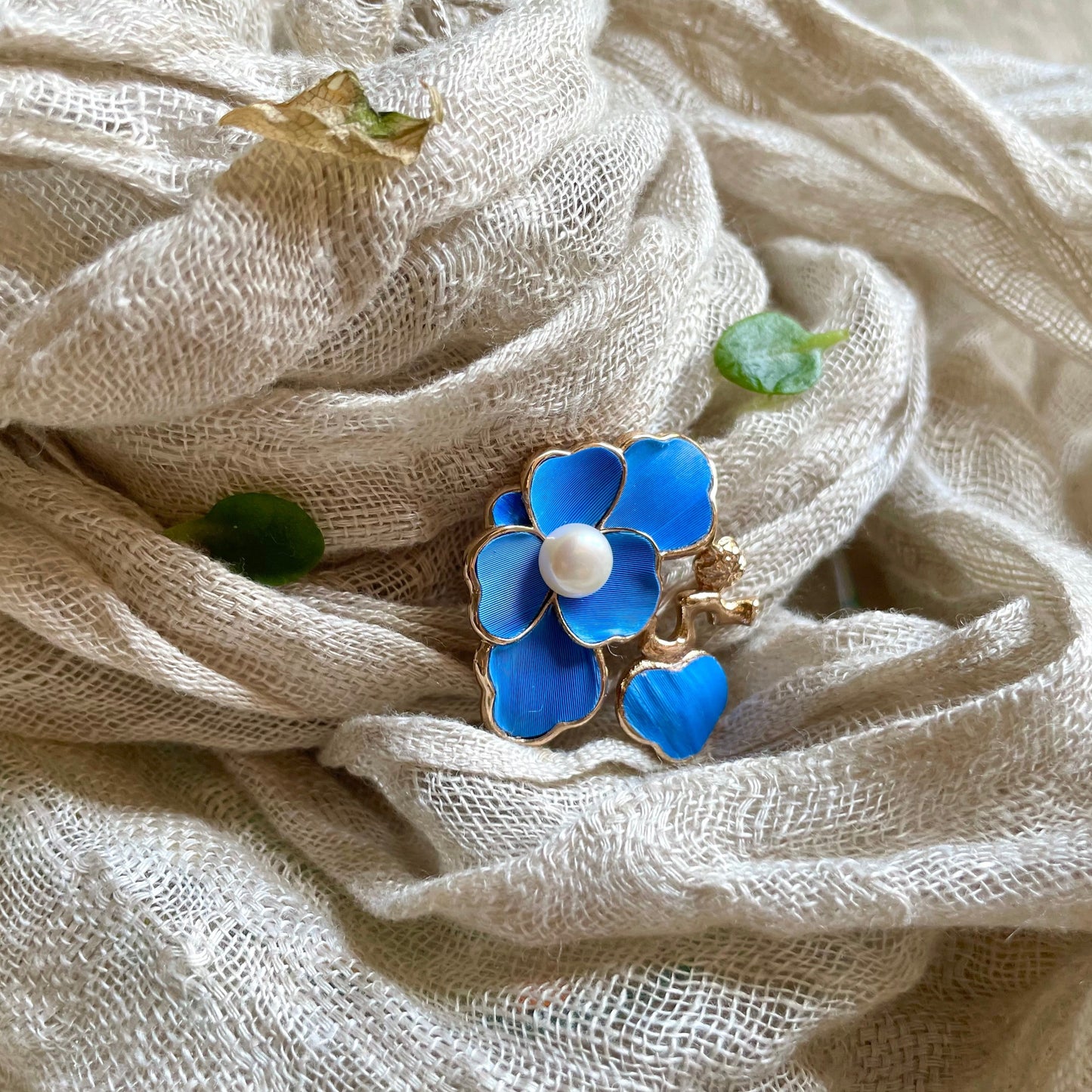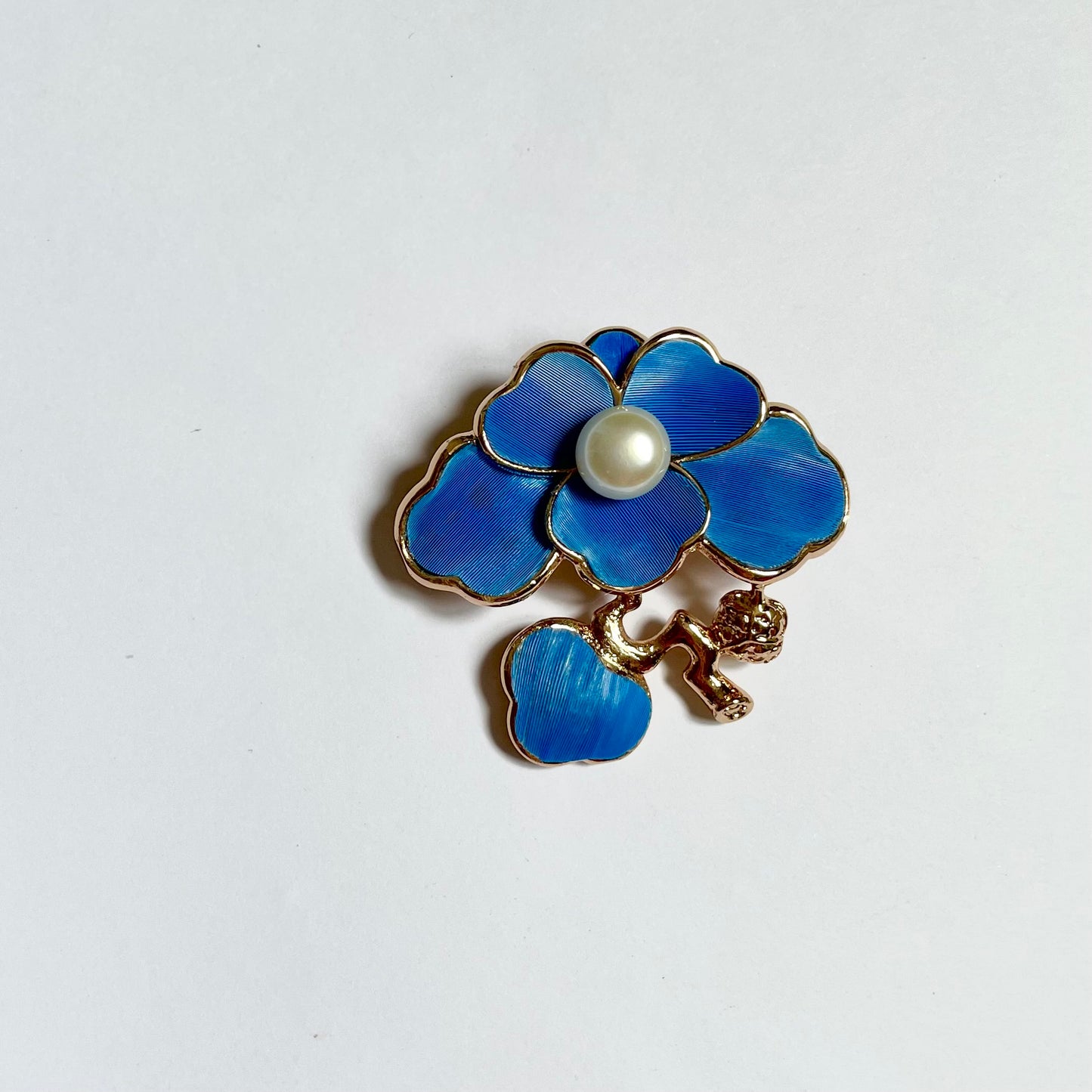Chinese traditional jewellery making is a complex and diverse art form that involves a wide variety of materials, techniques, and styles.
Tian-Tsui (in Chinese: Diǎn Cuì 点翠), also known as Feather Inlay Technique, is considered as an important and unique technique in Chinese traditional jewellery. It is a beautiful combination of traditional metalwork and feather craftsmanship, with a history dating back to the Han Dynasty (202BC - 9AD, more than 2000 years from now).
From ancient times, the technique has involved inlaying small, colourful feathers from a green-bluish birds (called kingfishers) onto metal pieces, creating intricate designs and patterns, such as flowers or birds, adding an artistic and cultural significance to the pieces.
This art form has a long and rich history, and it is evolved and adapting to contemporary styles and materials nowadays.

How did it become a popular jewellery making technique?
Tian-Tsui was used in various forms during the Han Dynasty. It was used to decorate various objects such as wooden and lacquerware boxes, furniture, and even weapons. Over this period, Tian-Tsui was still in its early stages of development and had not yet been widely adopted in jewellery making.

By the time of the Tang Dynasty (618-907 CE), it had become more established and was being used in the creation of luxury items. During the Ming (1368–1644) and Qing (1644–1912) Dynasties, this craftsmanship reached its peak in popularity, particularly in jewellery making.
Chinese artisans used Tian-Tsui to decorate the clothing of emperors, the crowns of queens, and to create hairpins, combs, earrings, necklaces, bracelets, rings, and other decorative items, still shining brightly after many long years, which were especially favoured by the imperial court and the upper classes.
The use of colourful bird feathers adds a unique and dynamic element to the jewellery pieces, giving them a lively and intricate appearance. During Qing dynasty, almost all the jewellery worn by the imperial consorts and princesses was done this way.
In fact, the use of Tian-Tstui in jewellery making during these periods was also closely linked to the trend of wearing accessories made from natural materials. This included not only feathers but also precious stones, pearls, and other materials found in nature. The resulting jewellery pieces were often intricate, beautiful, and highly prized, and are still regarded as some of the finest examples of Chinese traditional jewellery making.
[To continue reading]




